Need some tips on pet healthcare? These local veterinarians are here to help. Pictured: Dr. Samantha Carter and Rosie.
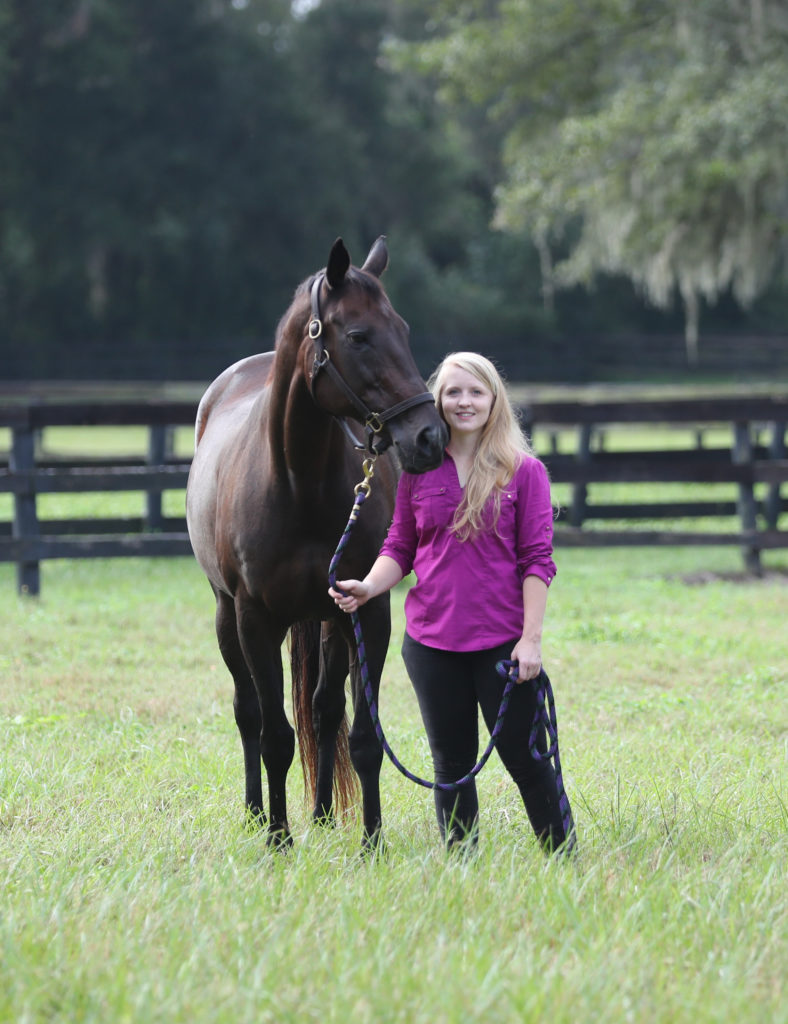 Now that you have fallen for the charms of that cute puppy, adorable kitten or beautiful foal—or have you decided to give a forever home to a rescued older pet—what’s next?
Now that you have fallen for the charms of that cute puppy, adorable kitten or beautiful foal—or have you decided to give a forever home to a rescued older pet—what’s next?
Beyond the obvious considerations that your pet should have that adequate food, water and shelter, it is vitally important to ensure they have care from a qualified health professional.
We talked with Dr. Katherine O’Brien of Maricamp Animal Hospital, Dr. Samantha Carter of Peterson & Smith Equine Hospital and Dr. Jenny Salpeter of Brick City Cat Hospital about, first, the bonds between humans and animals, and also about their most commonly asked questions about canines, equines and felines.
“The bond that exists between dogs and their owners is an amazing and powerful bond,” offers O’Brien. “This bond is a mutually beneficial and dynamic relationship between people and animals that positively influences the health and wellness of both involved. The statement that ‘Dog is man’s best friend’ was first recorded as being made by Frederick, King of Prussia in the 1700s, and it still rings true for today. In a world that is all about self-preservation and selfies, you will find this friend to be truly unselfish and they will never judge you no matter the situation. They depend on us, together, to make the right medical choices and deserve the respect of providing them with the absolute best care.”
Carter asserts that “The bond between horses and humans is exceptional because you’re often working with not only a companion, but an athletic team. As a veterinarian, we’re not only making sure that the horses are healthy, but also fit and capable of performing various jobs, such as racing and jumping.”
“The human and cat bond is very, very strong,” says Salpeter. “I cannot imagine not living with a cat. They bring such joy and a sense of compassion and caring that I think is really important. As a veterinarian, and a mother, the idea of having pets is important for teaching children how fragile life is, because cats and dogs do not live as long as people. For myself as a child, and for my own children, the first understanding of death happened because of a beloved pet passing away. That can help instill compassion, empathy and a lot of very important attributes to all humans.”
Here are some of the questions most frequently asked of the docs, along with their best advice.
Dr. Katherine O’Brien – Maricamp Animal Hospital
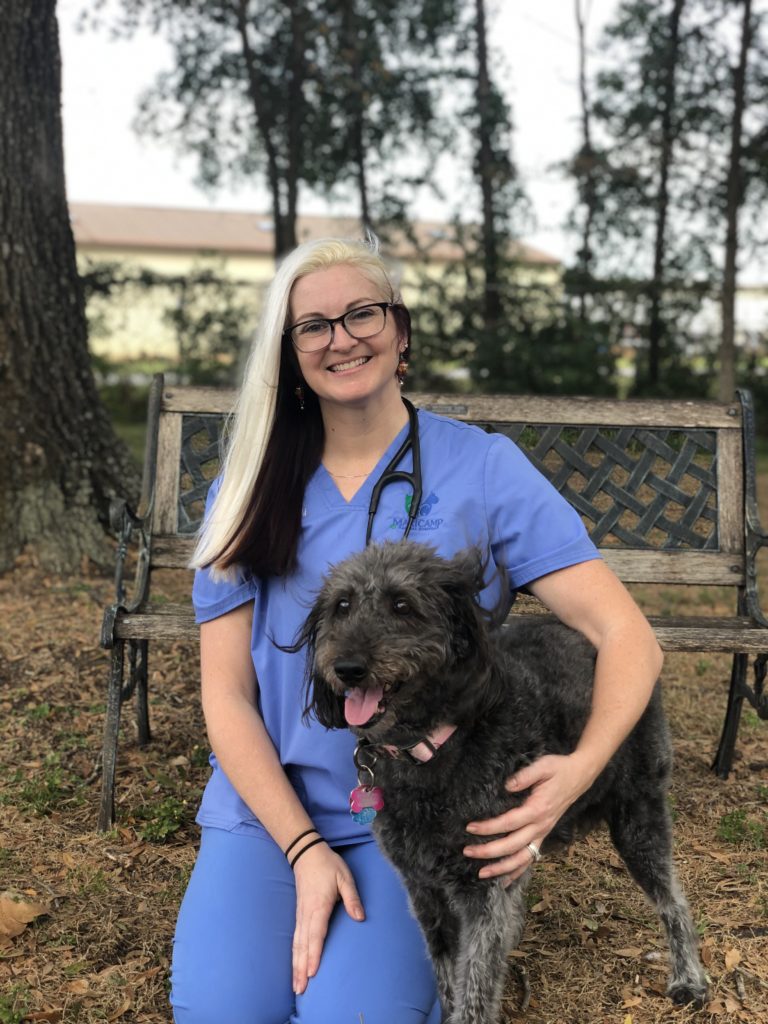 Question: What are the best preventive medicines?
Question: What are the best preventive medicines?
Answer: It is better to prevent a disease process than to try to treat it once it has begun. There are many areas in a dog’s life that require prevention, which includes but is not limited to intestinal parasites, viruses, bacteria, fleas, ticks and heartworms. Heartworm is a deadly disease spread by mosquitos, and some intestinal parasites can infect humans.
For heartworm prevention, we recommend ProHeart, an injectable medication that comes in a six-month or 12-month form. We have found that fleas have become resistant to over the counter medications, but any prescription flea and tick medication will work. Most dog owners in Florida have to add a second flea control to help, such as the Seresto collar, which works in alignment with oral medication.
Question: My dog’s breath smells bad! What can I do?
Answer: We brush our teeth twice daily and get our teeth cleaned once or twice a year, so you can imagine what your dog’s teeth look like without routine prevention and professional dental cleanings. Most of the time, we take pictures of their teeth to show the owners, because not many clients look in their pet’s mouth and especially not all the way in the back where the disease process begins.
The best prevention is to brush the pet’s teeth every day, feed them a dental diet and get their teeth professionally cleaned once yearly to prevent tooth aches, tooth loss, pain and suffering. You also can add in chews, and water and food additives.
Question: My dog is having age-related health issues. There is nothing I can do, right?
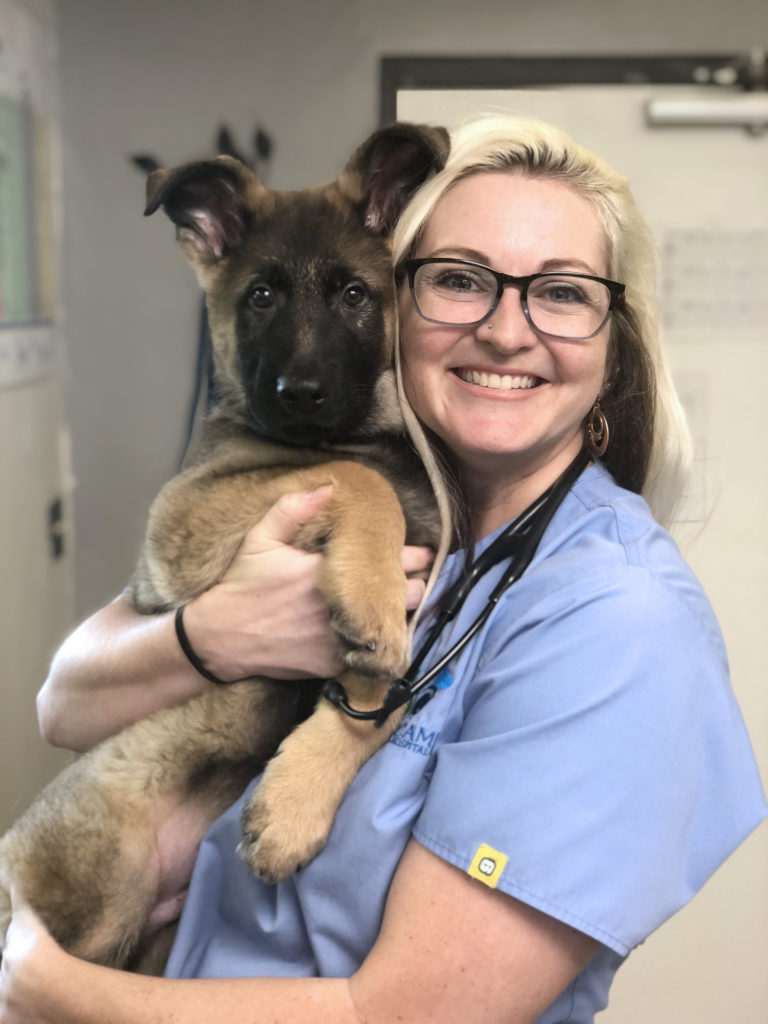 Answer: There are many opportunities and modalities to help your dog while it is aging. If the pet parents are willing to put in the time and effort into helping their dogs, the results can be rewarding. I find that when we give our pets the dignity and respect they deserve for all the love they give to us and our families, they get better faster.
Answer: There are many opportunities and modalities to help your dog while it is aging. If the pet parents are willing to put in the time and effort into helping their dogs, the results can be rewarding. I find that when we give our pets the dignity and respect they deserve for all the love they give to us and our families, they get better faster.
The pet must be ideal weight or thinner since any extra weight is hard on their joints. Oral supplements (which should be labeled orthopedic and/or advanced) and injectable joint supplements (given at your veterinarian’s office) are the basics of arthritic care. Exercise is super important because as pets age they start to lose muscle mass and become weaker and it is harder for them to get around. Preventative medicine helps ensure we are not missing any disease processes that could make them gain weight or have inflammation in joints. There is pain and anti-inflammatory medicine, but these have to be processed by the organs and can cause internal damage so we use these as a last resort.
My favorite and the most helpful for the pet are regenerative and alternative medicines. All-natural stem cell therapy helps regenerate tissue, which helps reduce pain and suffering. Other modalities would be platelet rich plasma, which is highly concentrated platelets from their body injected into the joints to give quicker relief; laser therapy to reduce pain and inflammation; ozone therapy, which oxygenates the blood, decreases inflammation and helps kill bacteria; and acupuncture, which stimulates the nervous system and reduces discomfort.
Dr. Samantha Carter - Peterson & Smith Equine Hospital
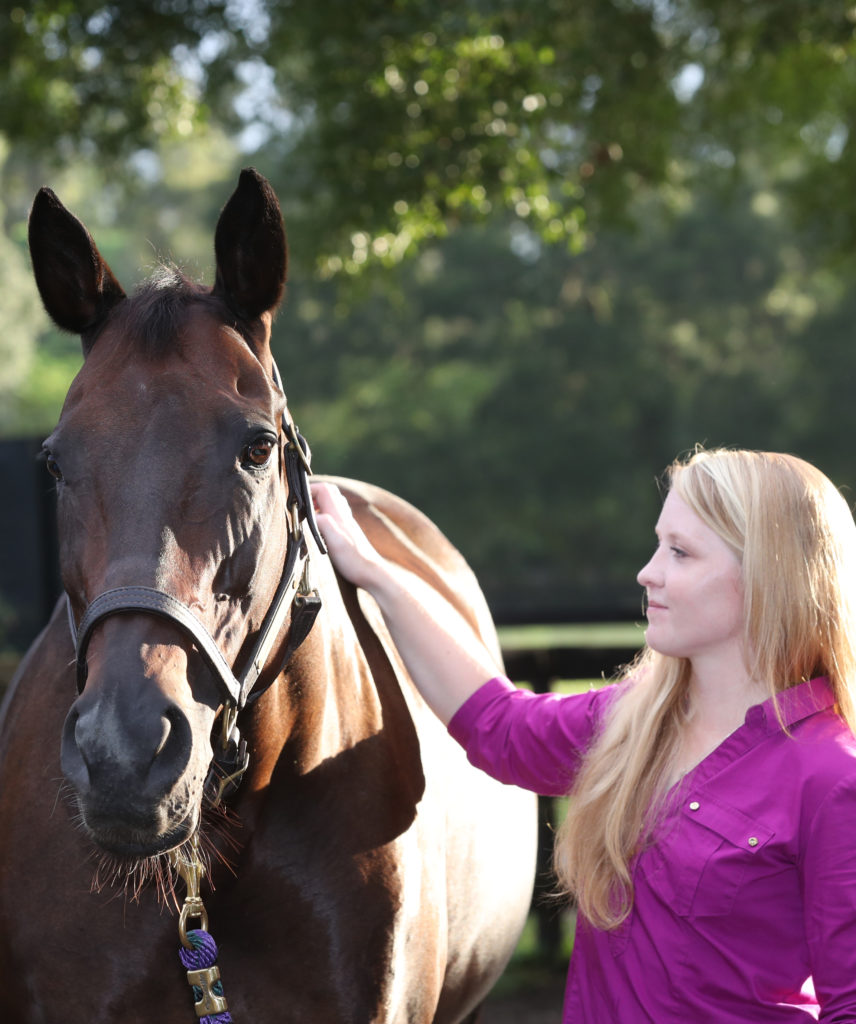 Question: My horse is lying down. Is that normal?
Question: My horse is lying down. Is that normal?
Answer: It is normal for horses to lie down for a few hours every day. Even though horses can sleep standing up because of the stay apparatus in the hind limbs, horses need to lie down to enter the REM stage of a sleep cycle. When lying down is accompanied by sweating, pawing, repeatedly lying down, or lip curling, these could be signs of colic (abdominal pain). When you suspect your horse is colicking,
it is important to contact your veterinarian.
Question: Is my horse overweight or underweight?
Answer: It’s best to look at a body condition score (BCS) to evaluate a horse’s weight. You can look at the fat deposits, or lack thereof, at the horse’s crest, tail head, withers, shoulder and ribs. The horse would then get a score from 1-9, with a 1 being very skinny, and a 9 indicating an overweight horse. An ideal score would be 5.
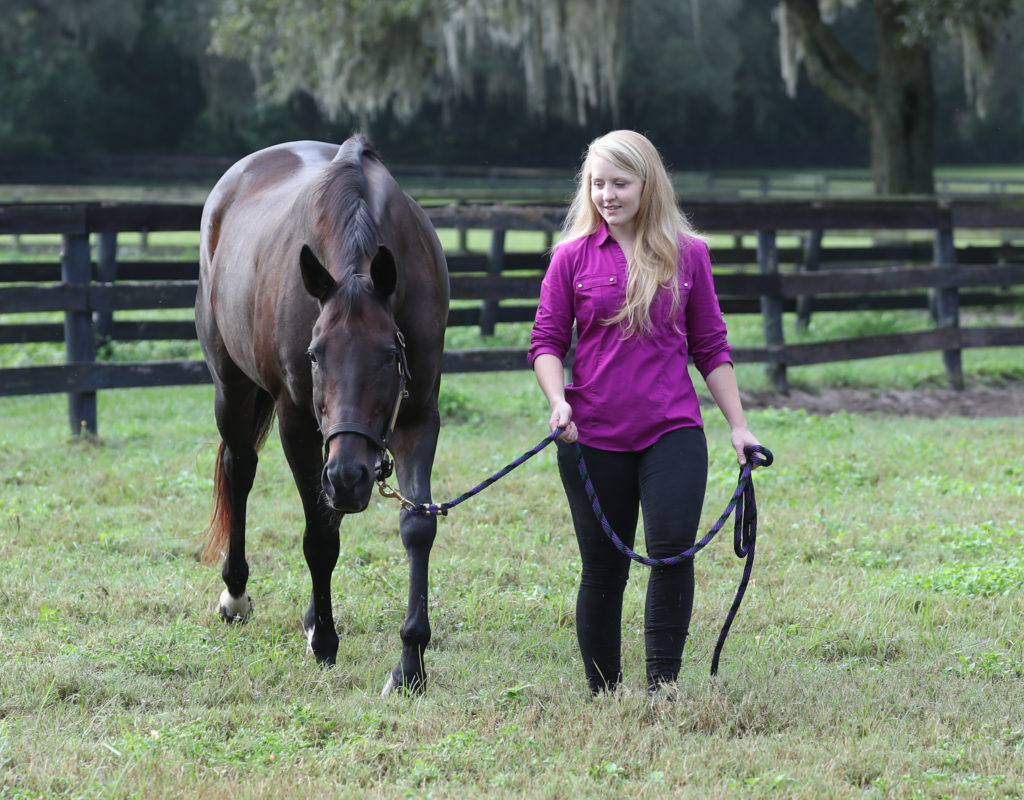 Additionally, there are two ways to estimate a horse’s weight that are useful guides for choosing the appropriate amount of grain and forage to maintain an ideal weight. The first method is to use a weight tape and the second method is to calculate an estimated weight by measuring the girth and body length in inches. Using these measurements, you can estimate the weight in pounds using this formula: Weight in pounds = girth x girth x body length ÷ 330.
Additionally, there are two ways to estimate a horse’s weight that are useful guides for choosing the appropriate amount of grain and forage to maintain an ideal weight. The first method is to use a weight tape and the second method is to calculate an estimated weight by measuring the girth and body length in inches. Using these measurements, you can estimate the weight in pounds using this formula: Weight in pounds = girth x girth x body length ÷ 330.
Question: What is in my horse’s eye?
Answer: The corpora nigra is a normal anatomical structure in the eye of the horse. It is the black lobular mass seen in front of the iris and pupil. The function of the corpora nigra is not known for sure, but it may play a role in blocking sunlight.
Dr. Jenny Salpeter – Brick City Cat Hospital
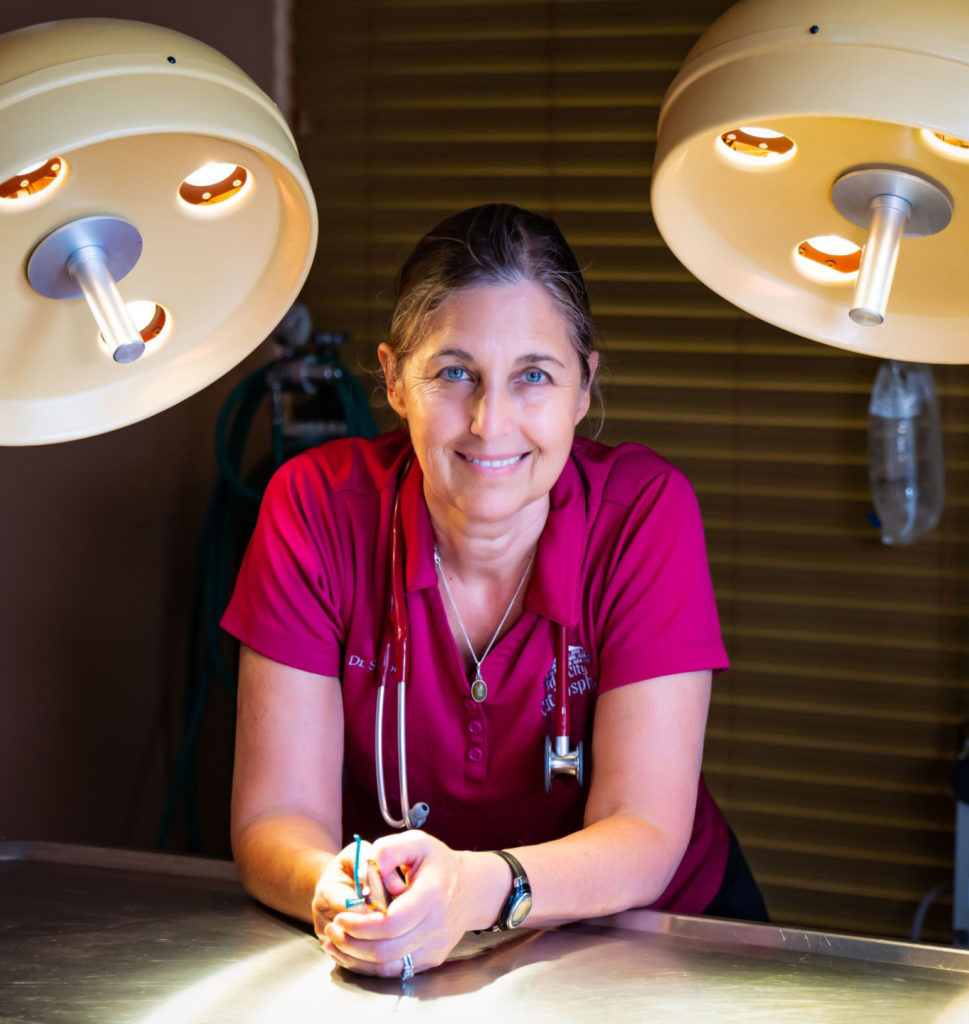 Question: How do I stop my cat from scratching on things?
Question: How do I stop my cat from scratching on things?
Answer: Scratching is a normal cat behavior, so they are not doing anything wrong. They don’t just do it to sharpen their claws, they do it to leave a scent to say ‘this is my territory.’ I think what frustrates people is that cats can damage property through scratching.
We’ve learned that declawing causes a lot of problems and it is illegal now in many places and probably will become illegal in Florida within the next year or two. We no longer declaw at this practice because we know it changes the cat’s foot confirmation and they end up with arthritis. Declawing can cause phantom pain and cats can develop regrowth of bone and nail, which is very painful. Cats that are declawed often are surrendered for behavior problems due to chronic pain. We recommend alternatives such as plastic nail caps or teaching cats to accept nail trims (there are videos on our website for how to do this).
You also can use scratching posts. The key to a good one is that it is tall enough to allow the cat to totally stretch. And make sure the fabric on the post is different from the fabric of your house. A lot of scratching posts are made with sisal, which is like a rope fiber, but if you have rugs that are a similar fabric, it would not be the right choice because the cat is not going to discriminate between them. I don’t like carpeted posts because cats can’t discern between the carpet on the post and the carpet in your house. An ideal scratching post is bark-like, because they like to scratch trees on the outside.
If your cat is not using a post, I recommend Feliscratch from Feliway to give visual and olfactory clues to help encourage them.
Question: What should I be feeding my cat?
Answer: I think you have to go back to what cats normally eat in the wild, which typically would be seven small meals a day, for about 210 calories, and they are hunting mice and voles. They only catch about 50 percent of their prey, so they spend a lot of time hunting, which creates kinetic energy. They are going to hunt, then be really still, then have a rapid burst to try to catch it, so they are using a lot of muscles and brain power.
 When we keep cats inside, or indoor/outdoor, we have a tendency to overfeed, which has a tendency to cause a lot of health concerns with obesity and secondary problems such as diabetes, arthritis and heart disease. I encourage multiple small measured meals a day. The average cat needs around 220-240 calories a day.
When we keep cats inside, or indoor/outdoor, we have a tendency to overfeed, which has a tendency to cause a lot of health concerns with obesity and secondary problems such as diabetes, arthritis and heart disease. I encourage multiple small measured meals a day. The average cat needs around 220-240 calories a day.
I like a mix of canned food predominantly, and some dry. Canned has a lot of water in it to help make sure cats stay hydrated and it’s a little higher in proteins. Dry can be beneficial for their teeth, but only if the kibble size is super big so they have to crunch it. A lot of kibble is small and the cat just swallows it whole.
The best food should be similar to that mouse model, meaning fairly high in protein, with a little bit of carbs and fat. There is a push to be grain-free, but I am not a proponent because grains are part of their natural diet. If we are going to predominantly feed dry food, I like to use food puzzles to try to simulate the hunt. We have a tendency to shower love with food. I’m trying to teach people to make sure their cats are healthy and not obese.
Question: What should I do about flea control?
Answer: We live in a perfect environment for fleas. It’s the right humidity and our indoor air is the right temperature. People ask how can my indoor-only cat get fleas? You can bring in hitchhikers on pant legs, socks, etc. Most of the flea’s life is off of the pet. One adult female flea can lay 50 eggs a day.
It is super important that even inside-only cats be on flea and heartworm prevention. We recommend an all-purpose flea, heartworm, hookworm and roundworm prevention. When we have a flea problem, it takes three months to break the life cycle. A lot of times you’ll buy a product, whether it’s through your veterinarian or online or at a pet store, and you’ll think it’s not working, but it is, it just takes three to four months because nothing kills the pupa. It’s really important that all cats— inside and outside—are on a preventative product.






